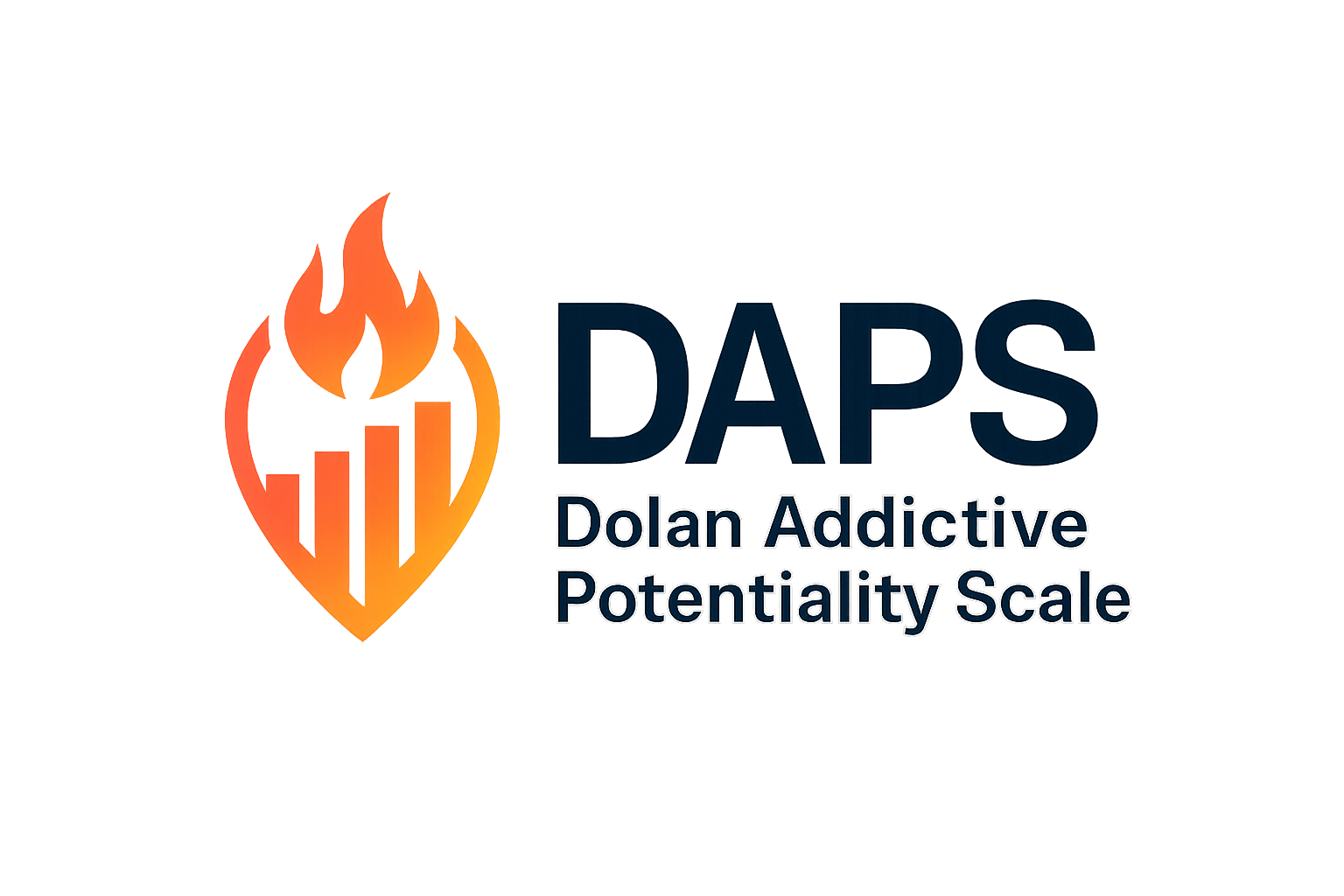Scoring method
Score each substance on six factors (0–4 each). Sum → DAPS Raw (0–24), then map to levels. A 4x flag upgrades the level if "instant-hook" criteria are met.
Factors (0–4 each)
- Reinforcement (R): immediate reward/craving after use.
- Withdrawal severity (W): intensity/danger of stopping.
- Tolerance rate (T): how fast dose must rise to feel effects.
- Onset/Route (O): speed to peak effect (IV/smoked > intranasal > oral).
- Capture rate (P): % of experimenters who develop a use disorder.
- Compulsive pattern (C): binge/redose cycle, loss of control.
Anchors and mapping
Anchor guidance per factor: 0 = negligible, 1 = mild, 2 = moderate, 3 = high, 4 = very high. DAPS Raw = R+W+T+O+P+C (0–24). Map raw to levels:
- Level 0: 0–2
- Level 1: 3–6
- Level 2: 7–10
- Level 3: 11–14
- Level 4: 15–19
- Level 4x: 20–24 or meeting any 4x flag
4x flags (any one → 4x)
- Very fast onset + very high reinforcement (smoked/IV + rush)
- High capture rate in early exposures (dependence after 1–3 uses)
- Severe withdrawal after short exposure or compelling binge-redose loop within a session
Quick classification nudges
Use these when scoring:
- Onset/route: Oral/slow → subtract ~1; Intranasal → baseline; Smoked/IV → add ~1–2
- Binge/redose pattern: None → −1; Intermittent → 0; Compulsive → +1
- Capture rate: <5% → −1; 5–15% → 0; >15% → +1
Examples & notes
See the classifications page for populated examples and the dataset. DAPS is meant for population-level communication of addictive potential. Consider a separate DAPS-D (0–4) for physiologic danger (overdose/toxicity) to report addiction vs lethality separately.
